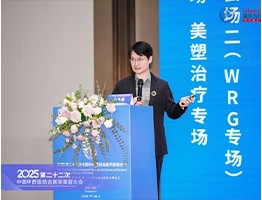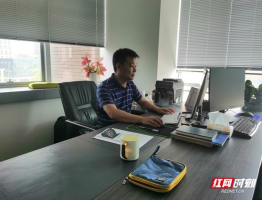Scientists Develop Palm-sized Short-pulse Laser System: Efficiency Increased to 80%
source:IThome
keywords:
Time:2025-11-20
Source: IThome 10th Nov 2025
According to IThome, a research team from the University of Stuttgart in Germany has jointly developed a new type of short-pulse laser system that combines high efficiency, miniaturization, and wide applicability. The relevant results were published in Nature on November 5.
As introduced, this innovative laser is only palm-sized but achieves more than twice the energy efficiency improvement of existing designs. The research team stated that the system can reach an energy conversion efficiency of 80% in experiments, far higher than the current level of approximately 35%.
"With our new system, we can achieve efficiency levels that were previously almost unattainable," said Professor Harald Giessen, Director of the 4th Institute of Physics at the University of Stuttgart. "This means 80% of the input energy can be effectively utilized, instead of most being lost in the process."
Short-pulse lasers, with their extremely high temporal resolution and energy density, have become important tools in manufacturing, medical care, and scientific research. Such lasers can release energy at the nanosecond, picosecond, or femtosecond level (i.e., one billionth to one quadrillionth of a second), making it possible to concentrate energy in tiny areas within an extremely short time.
The technical system consists of two types of lasers: pump laser and short-pulse laser. The pump laser injects energy into a special crystal at the core of the system, which transfers the energy to the ultra-short pulse signal and ultimately converts the input light into infrared light. Light energy in the infrared band supports higher-precision measurement and manufacturing — from medical imaging to quantum-level molecular research, all can benefit from this capability.


Dr. Tobias Steinle, the first author of the paper, pointed out that developing high-efficiency short-pulse lasers has long been a challenge: "To generate short-pulse light beams, it is necessary to both amplify the input light and cover a broad wavelength range. However, achieving both simultaneously in a compact optical system has been infeasible."
In traditional designs, broadband amplifiers require extremely short and thin crystals, while high-efficiency amplifiers need longer crystals. Researchers usually connect multiple short crystals in series to balance the two, but this requires the pump laser and signal pulses to be strictly synchronized in time.
To resolve this contradiction, the research team proposed a new "multipass" concept. They used a single short crystal and allowed light pulses to pass through it multiple times; between each pass, the system precisely recalibrates the beam position to maintain synchronization between the two types of pulses. Composed of only five components and occupying an area of just a few square centimeters, this design can generate laser pulses shorter than 50 femtoseconds.
"Our multipass system demonstrates that high efficiency and broad bandwidth are not conflicting," said Steinle. "This design can replace the original bulky, expensive, and energy-intensive ultra-short pulse amplification equipment."
The system also features high flexibility, capable of adapting to multiple wavelength ranges beyond infrared light, as well as different types of crystals and pulse durations. The research team plans to develop more compact, lightweight, and tunable laser devices based on this design, which can be widely applied in fields such as medical imaging, spectral analysis, gas sensing, and environmental monitoring.
IThome attaches the paper link: https://www.nature.com/articles/s41586-025-09665-w
 Scientists Develop Palm-sized Short-pulse Laser System: Efficiency Increased to 80%
Scientists Develop Palm-sized Short-pulse Laser System: Efficiency Increased to 80% Global LiDAR Giants Engage in Escalating Patent Wars
Global LiDAR Giants Engage in Escalating Patent Wars From Cambridge to Haining, he made China's lasers light up the world for the first time
From Cambridge to Haining, he made China's lasers light up the world for the first time 4 in 5 days! These laser "mega-projects" successively put into operation or capped
4 in 5 days! These laser "mega-projects" successively put into operation or capped Analysis of Global Optical Communication Chip Market: Tiered Competition & Chinese Rise
Analysis of Global Optical Communication Chip Market: Tiered Competition & Chinese Rise
 Zhuojie Laser: Breaking barriers via tech breakthroughs, aiming to lead high-end light sources
Zhuojie Laser: Breaking barriers via tech breakthroughs, aiming to lead high-end light sources Dr. Sun Linchao: Pioneer and Leader in China's Field of Medical Aesthetic Laser Therapy
Dr. Sun Linchao: Pioneer and Leader in China's Field of Medical Aesthetic Laser Therapy Guo Guangcan, CAS Academician & USTC Professor: Four Decades Chasing Quantum "Light"
Guo Guangcan, CAS Academician & USTC Professor: Four Decades Chasing Quantum "Light" Ma Renmin: A Peking University Physicist Striving to Break Through the Boundaries of Nanolasers
Ma Renmin: A Peking University Physicist Striving to Break Through the Boundaries of Nanolasers Lu Guangfeng: Retired but Not Faded, 20-Year Dedication to Laser Gyroscope R&D
more>>
Lu Guangfeng: Retired but Not Faded, 20-Year Dedication to Laser Gyroscope R&D
more>>
